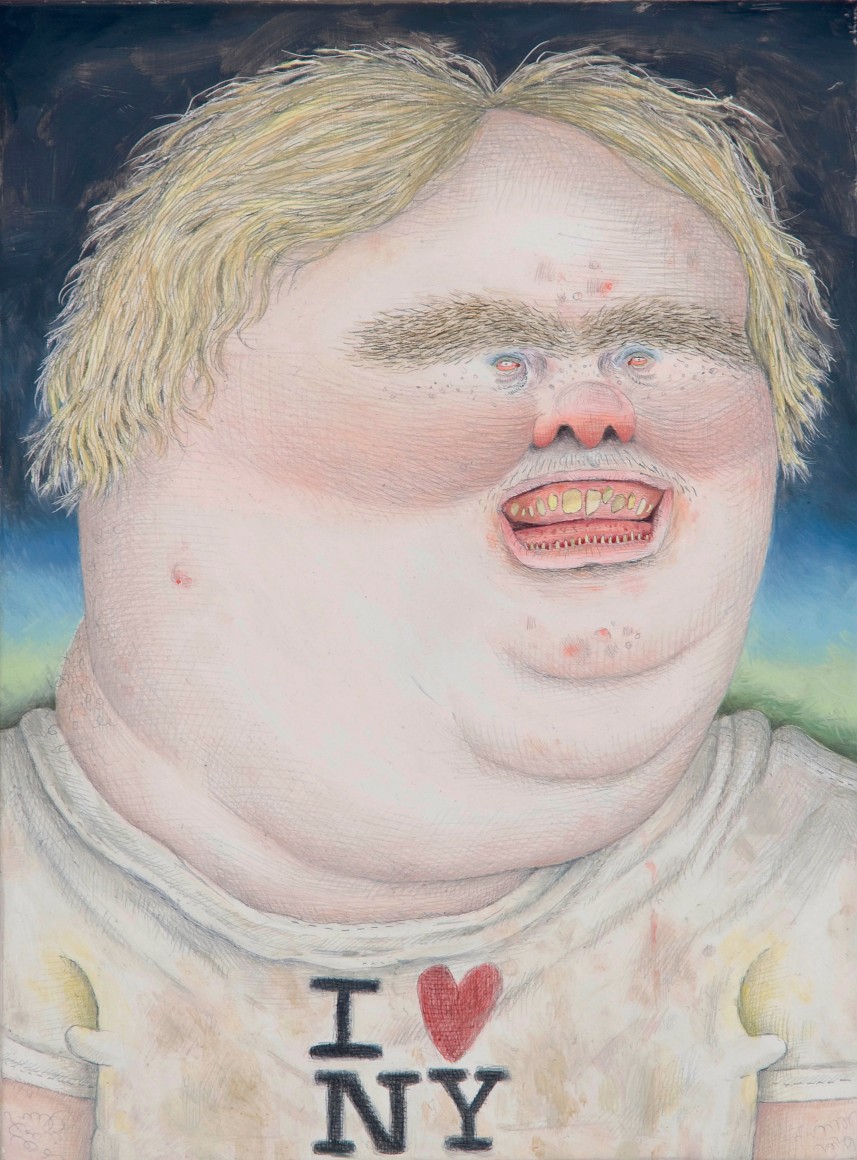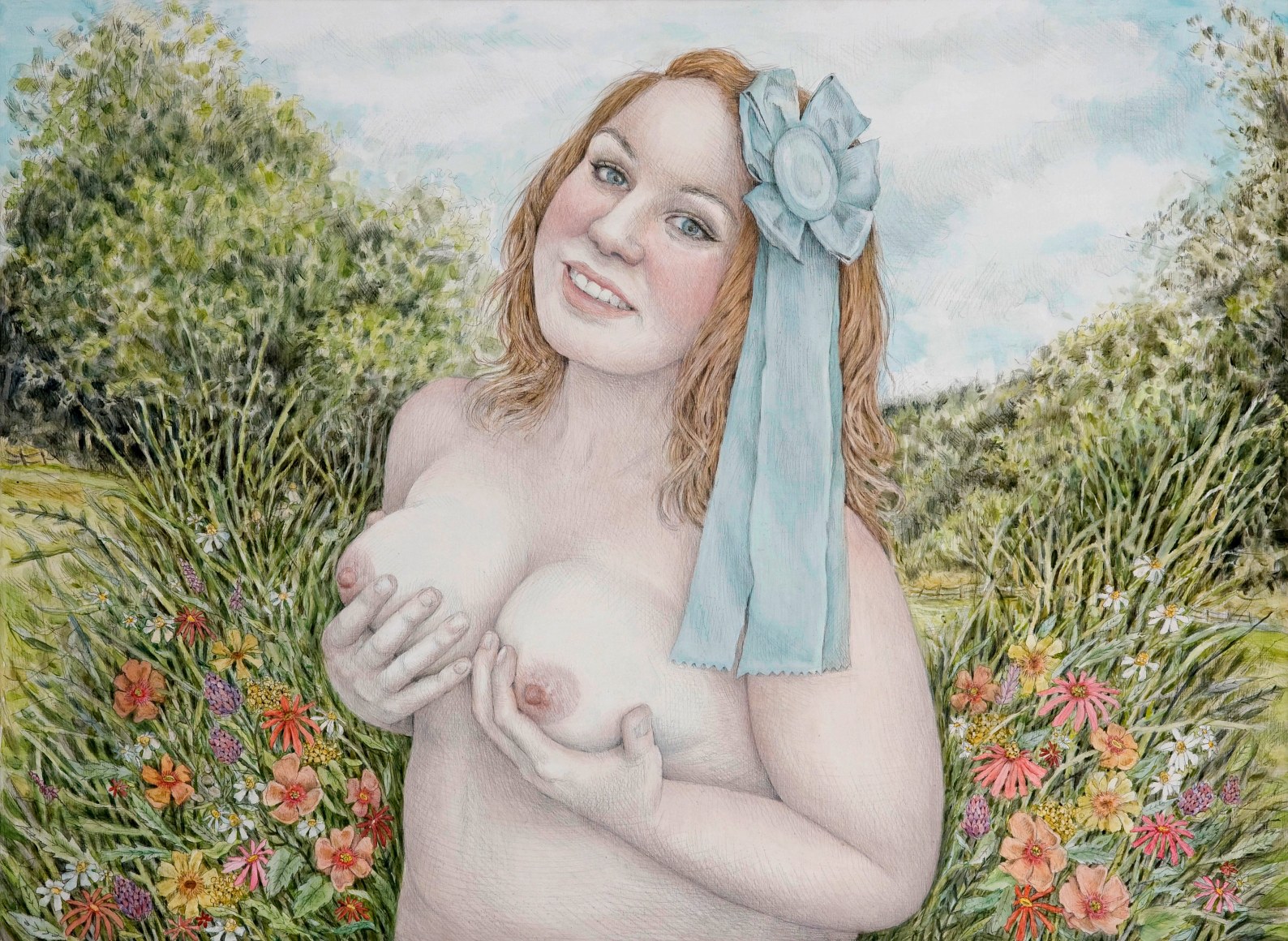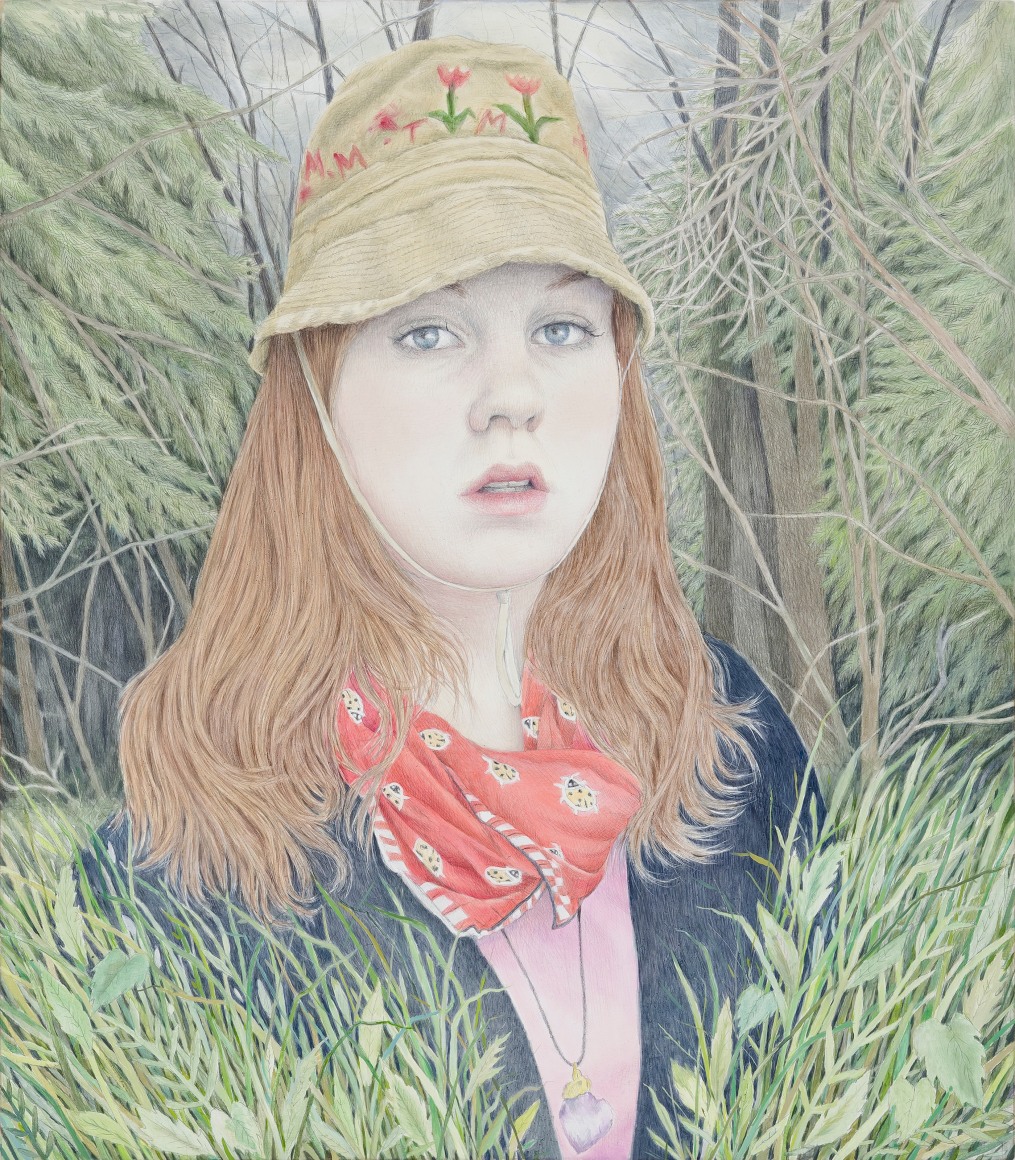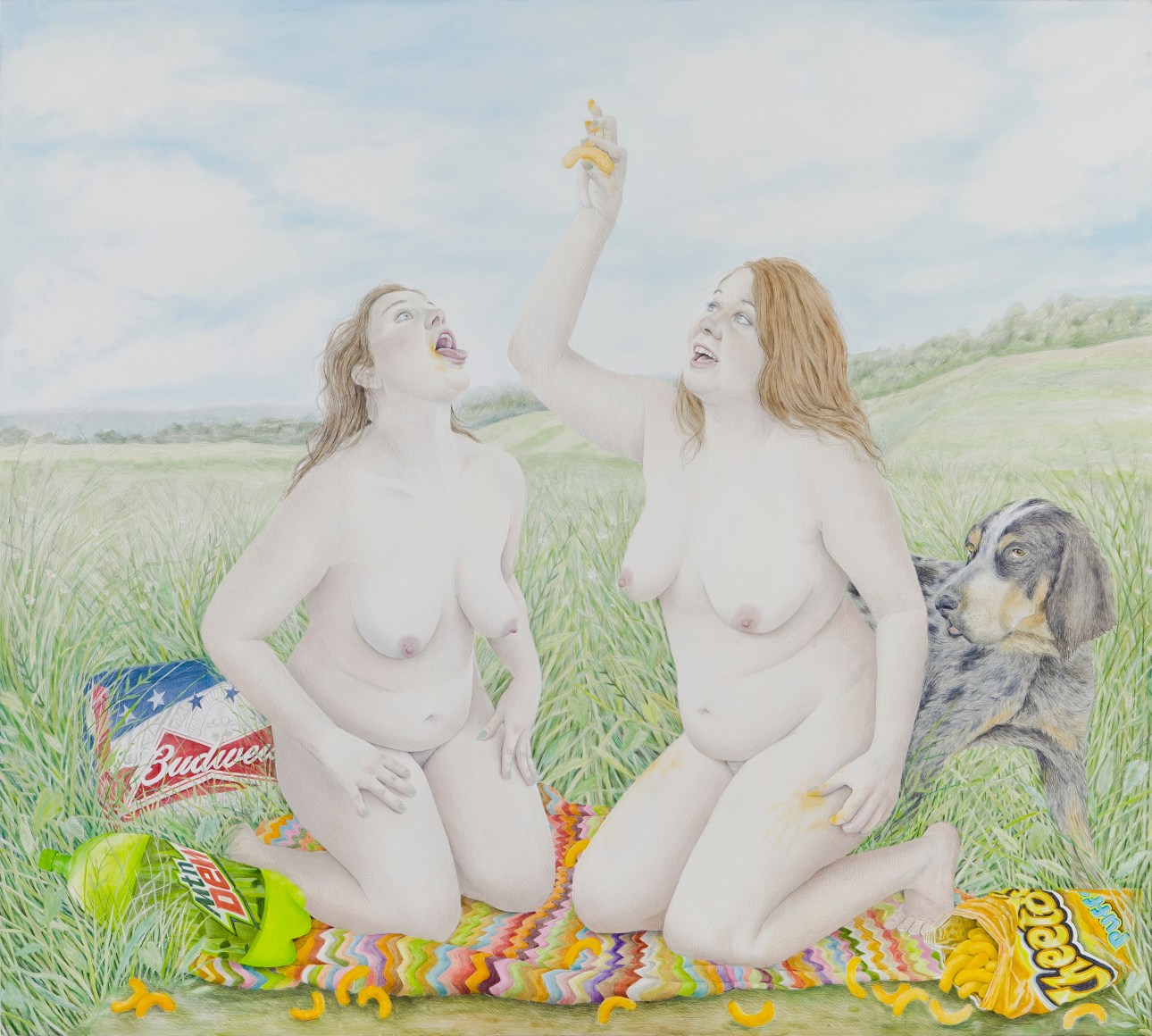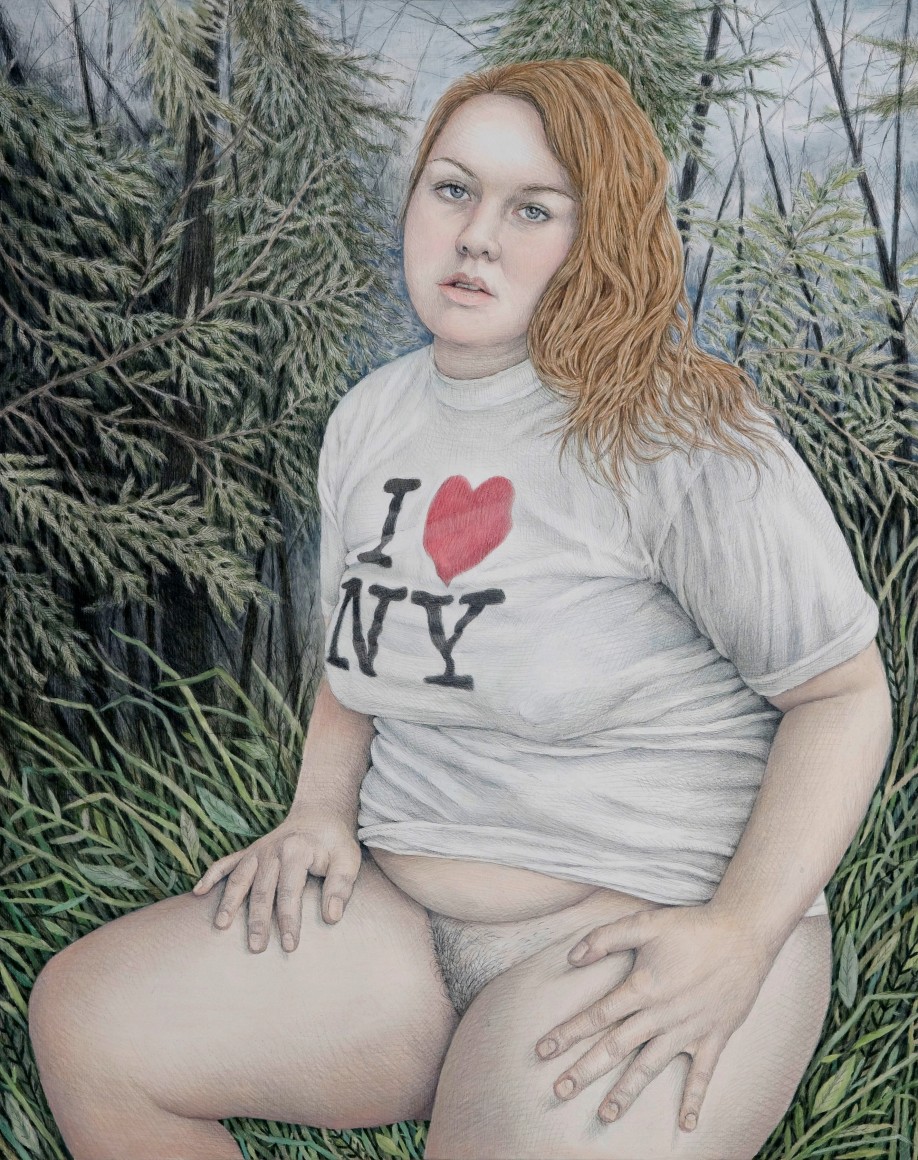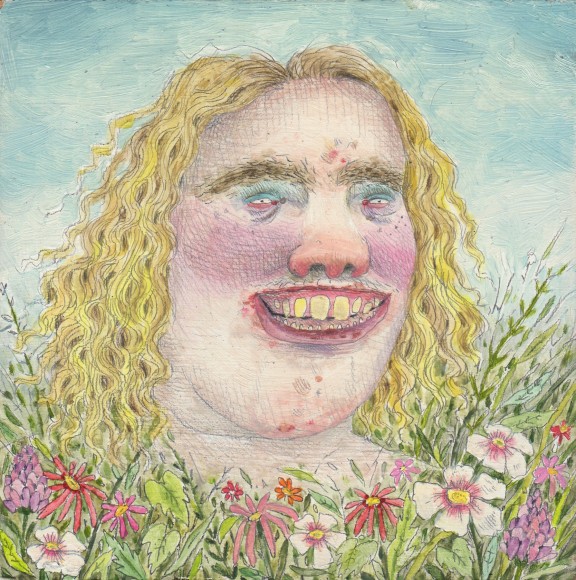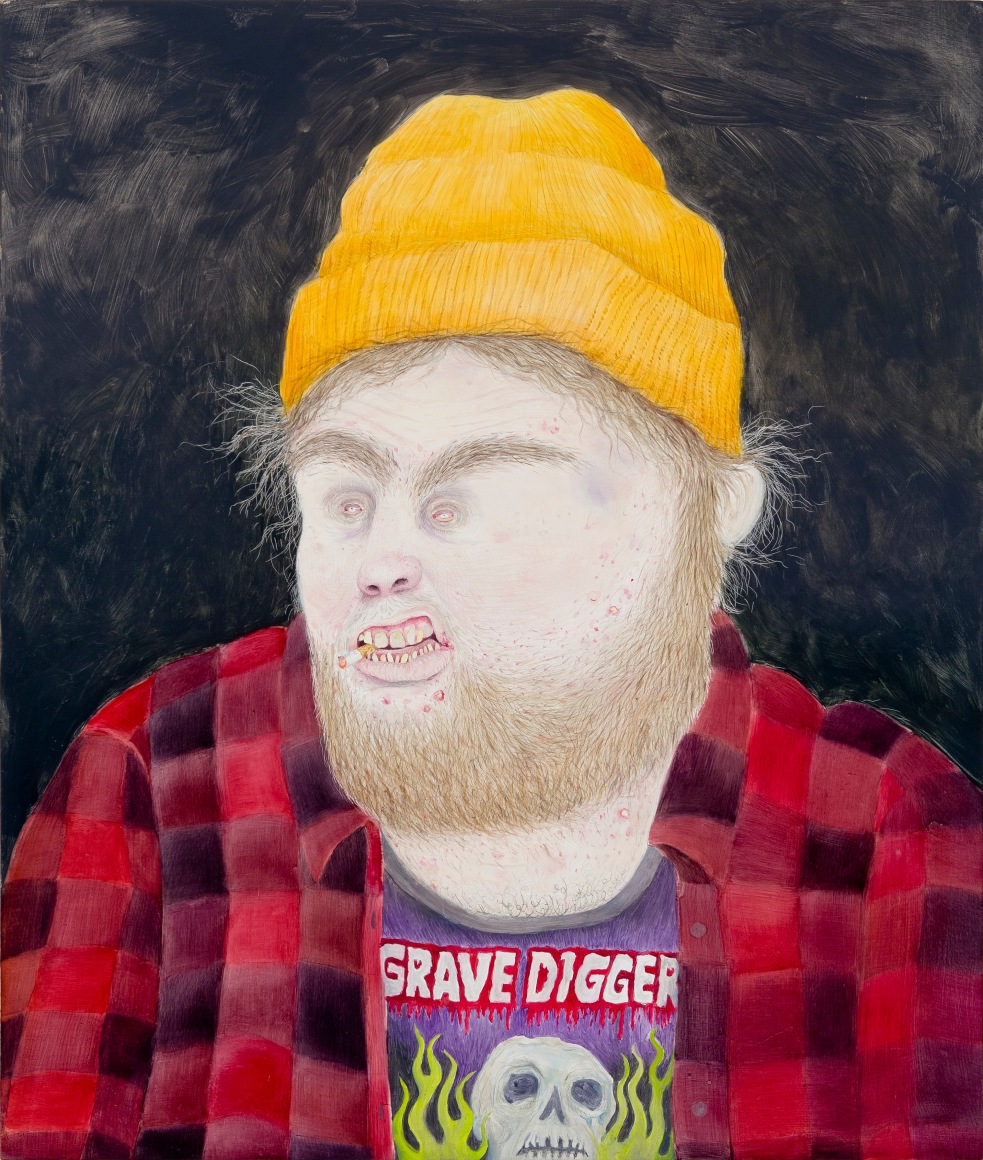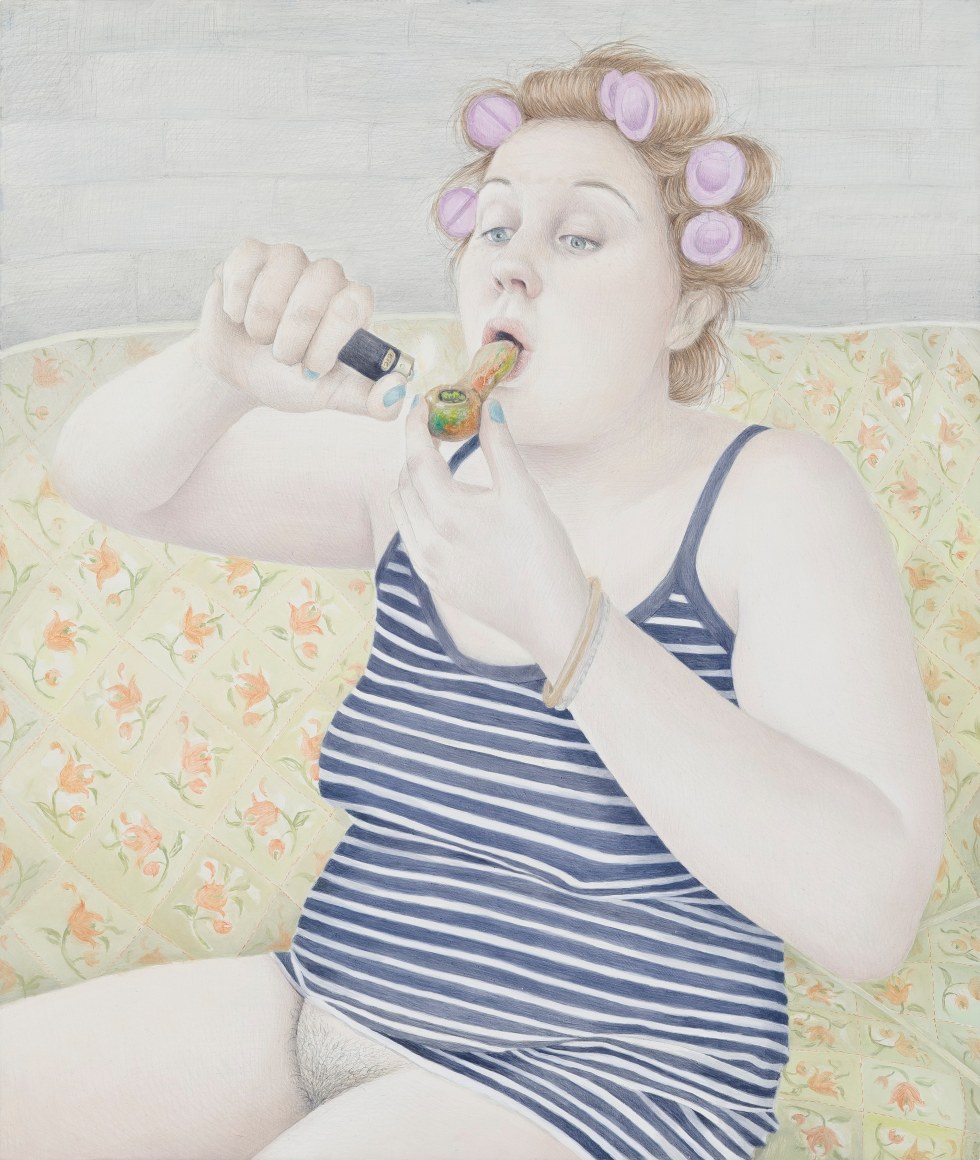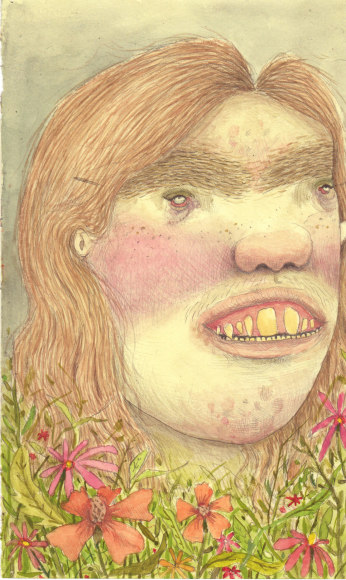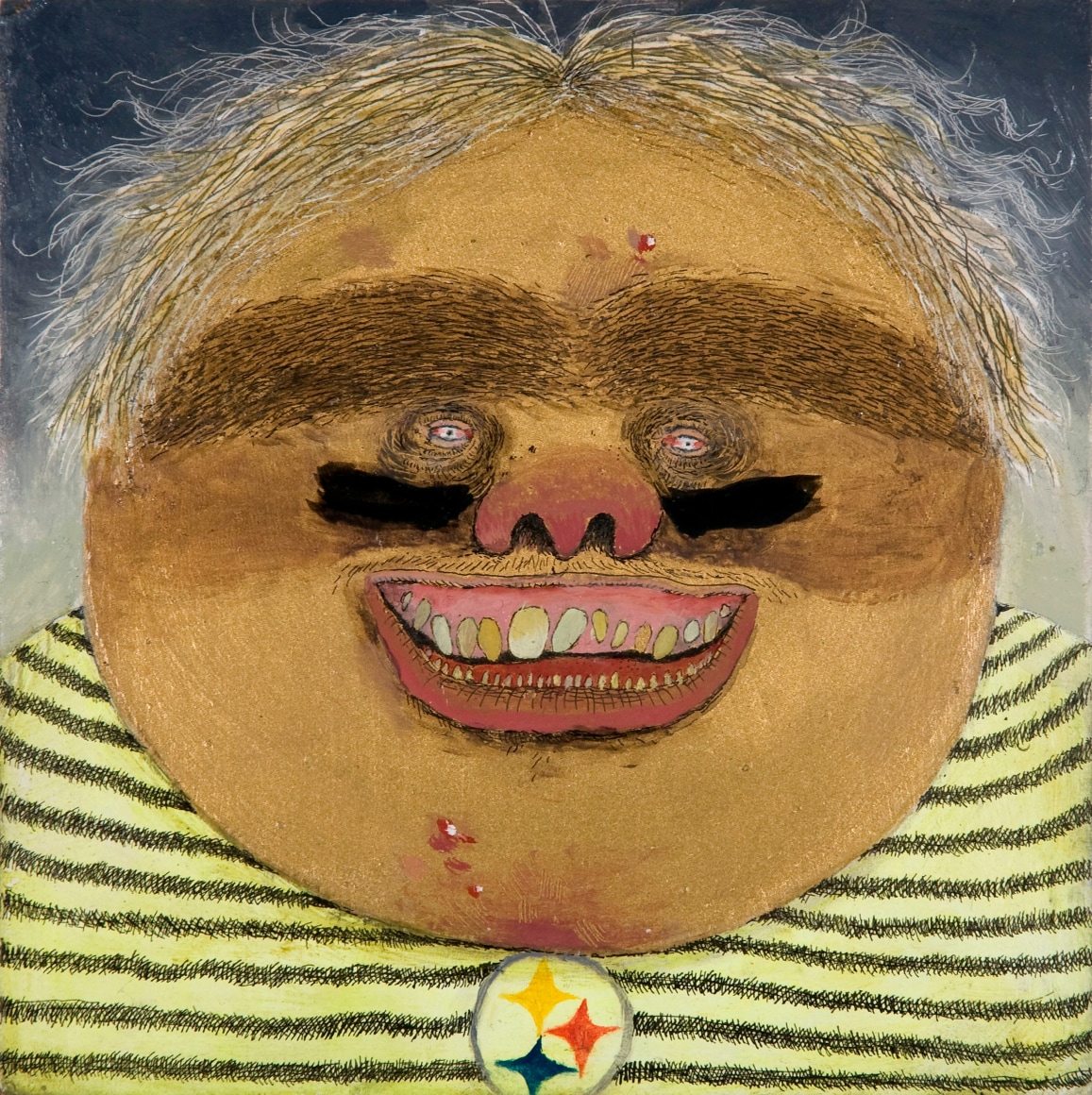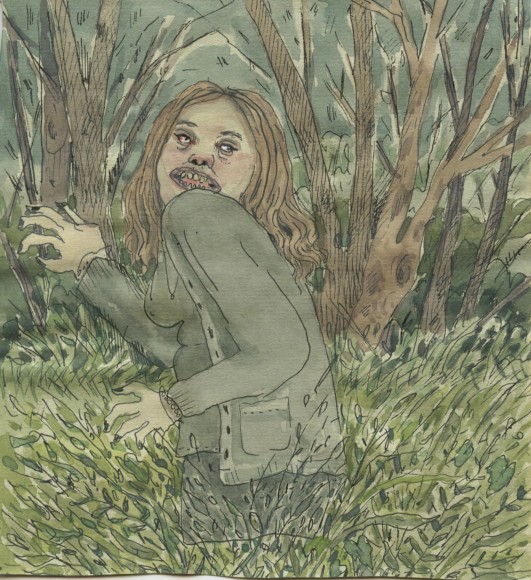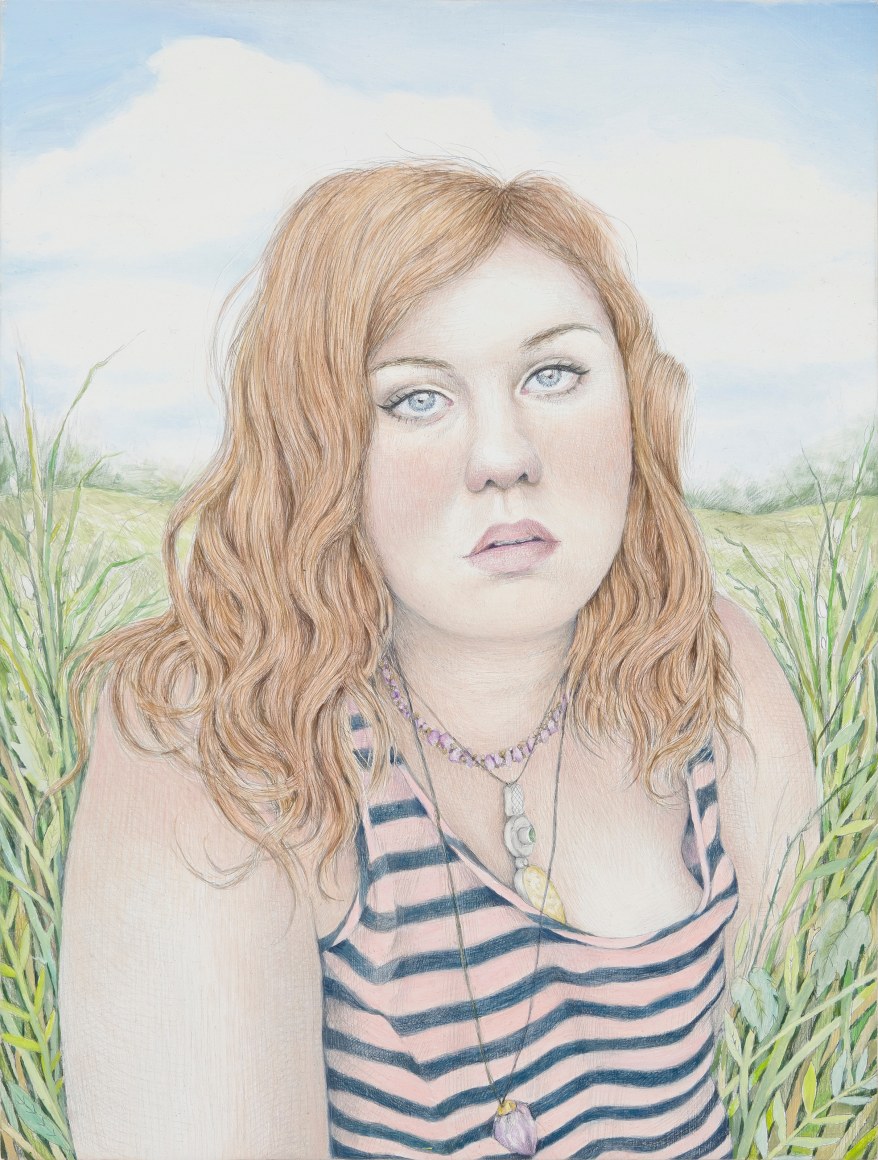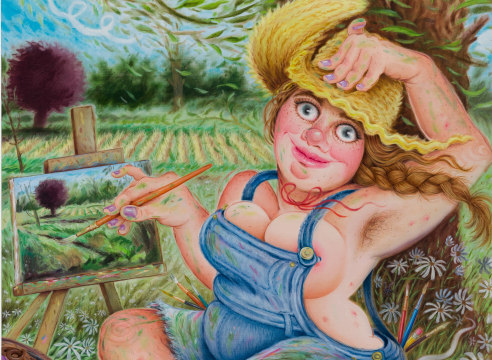
Asya Geisberg Gallery is pleased to present Cabin Fever, an exhibition of paintings and drawings by Rebecca Morgan.
Morgan creates a collection of characters and types, a cross between Brueghel’s stylized peasants, R. Crumb’s winking
harlots, “Deliverance”, and the inbred mutants of many a horror flick. Morgan takes her background in rural Appalachia
as the point of origin for her personae - as they become uncultured tourists, or, especially in her self-portraits, expatriate
interlopers ambivalently negotiating their depiction. Morgan’s more exotic rednecks inhabit a rural America where
people exist intimately and potently with the wilderness, a relationship which urbanites can only smirk at and envy.
Nature is either wistfully idyllic - the idyl found in a margarine ad - or the scene of demonically perverse debauchery.
Morgan’s style fluctuates between hyper-detailed naturalism, reminiscent of Dutch painters such as Memling and Van
Eyck, and cartoonish caricature, which pushes the imagery to a ridiculous, repulsive, even absurd dimension. Jagged
teeth, furry brows, corpulent bodies symbolic of sloth and over-indulgence, and a general air of dirty unkemptness all
exploit the demonization of the Appalachian. Internal traits come to the surface, and while Morgan exorcizes her country
folk’s demons, ridicule mixes with pride and defiant celebration. In her alternately tender and aggressive depictions of
herself, she bares all - a metaphoric exposure of her former rural character, or to prod the viewer to question their own
position.
Morgan reveres Frans Hals’ paintings of happy peasants and Adrien Brouwer’s fighting, laughing, and drunk lower
classes. Similarly, her symbolic language and character types recall Dutch parables, which were meant to both entertain
and teach a lesson to the middle- and upper-class patrons of such works. Morgan plays an intricate game of backand-
forth accusations: she panders to the same stereotypes that she herself contends with, and in a modern twist,
acknowledges that she is laughing at the subject, the viewer, and our contemporary conflict of pining for a pre-cultural
back-to-the-land utopia while sipping our Starbucks.

